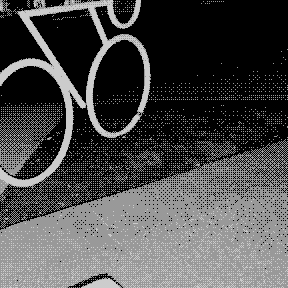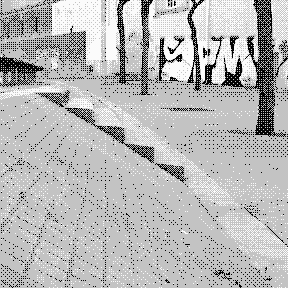Afternoon traveler. Hope you've been able to rest yourself sufficiently of late. I 'm sure you're busy, but I thought I’d stop you for just a moment to talk about something that’s on my mind. It’s just been kickin’ around in my head while I wander about these parts, tidying things and trying to make ‘em look nice.
I haven’t really skateboarded for a while. I love to skate, but I just haven’t really made much time of late to go out and do it. I don’t have any grand aspirations when it comes to skateboarding, but I like learning new things and trying them out. It scratches a similar itch that a lot of technical learning does for me. I can focus in on an object and its function and try to parse how it works. I’ve got a few family members and friends who have helped me a lot in thinking about how my body moves, how a skateboard tends to move, and how I might use that information to do interesting things in concert with my skateboard. The process of learning and internalizing how to move myself and control for the peculiarities of a rolling piece of wood is… calming, and it’s something I kinda miss.
This all comes to mind because I’ve been watching some neat skate videos recently. I don’t know if you’re familiar with the medium, traveler, but a skate video is generally divvied up into sections where different skateboarders—“skaters” we’ll call ‘em—show off their neatest tricks to delight or impress the audience. There’s a familiar rhythm to traditional skate videos. The skater rides along (maybe towards an obstacle), performs a trick, and then successfully rides off. Impressive! These videos I watched most recently are impressive, but in a distinct way from what I’m accustomed to.
Fancy Lad is the Boston based group/collective/company that does the videos I’m talking about. They (Fancy Lad and their videos) are noisy and silly and messy. There’s a real playfulness about them, and it’s reflected in how they present their skaters and in the tricks each of them do. When successful, a skater will chuck their skateboard(s) into walls, hover above the board as it ricochets off of additional obstacles, and then land on it to ride off. Here, let me show you an example:

This is a video of Matt Tomasello, a skater with Fancy Lad, performing a weird version of a familiar trick. He’s a highly technical skater who leans into the uncertainties of the sport by employing unique board handling techniques and custom-made articulated skateboards. He does more visually complex tricks than the one shown above, but this example offers a clear idea of how Tomasello, and skaters like him, complicate common approaches to skateboard tricks.
Every skater performs their tricks with an eye for interesting movement around obstacles, but Tomasello’s skating emphasizes his environments and skateboards as party to the execution of a trick. Skating any obstacle, like a ledge or staircase, does require careful attention to how its build can impact your trick—how grippy surfaces are, or what angles you have for approach. But planning out how the bike rack you’re throwing your skateboard at will spin your board in the air is another variable entirely—and one that is decidedly less predictable. The boards Tomasello makes share that unpredictable quality. Here’s another example.

Matt Tomasello’s modified skateboards say to you in the extreme what every person learning to do tricks on a skateboard is told: If you can pop this skateboard off the ground in just the right way, you might make some wonderful things happen. Tomasello doesn’t come up with these tricks out of thin air, though. Even when he’s rolling the dice with his skateboard, Tomasello is taking lessons from movements largely traceable to skaters that have come before him. What Matt Tomasello does is complicate the lessons he’s learned from predecessors with his own experimentation.
Kane A. Caples’ skating sticks in my head for similar reasons. First, because they do spectacular things with very fundamental skateboarding movements.  Like this, for example. Kickturns, stance switches, and powerslides are all essential skateboarding skills, but they’re usually pretty straightforward. Caples cranks these to 11, and turns them into something to marvel at. Finally getting the hang of these moves when I first started skating felt like a real triumph. To see a skater not just using them, but basically dancing with them is pretty wonderful. Second, their part in There Skateboards’ Euro There video includes a tailslide on a staircase where, mid-trick, they just...plant their foot and push.
Like this, for example. Kickturns, stance switches, and powerslides are all essential skateboarding skills, but they’re usually pretty straightforward. Caples cranks these to 11, and turns them into something to marvel at. Finally getting the hang of these moves when I first started skating felt like a real triumph. To see a skater not just using them, but basically dancing with them is pretty wonderful. Second, their part in There Skateboards’ Euro There video includes a tailslide on a staircase where, mid-trick, they just...plant their foot and push.
 Skateboarding often feels like a game of “the floor is lava.” If you touch your toe on the ground or—heaven forbid—plant your foot in the middle of a trick, you’ve basically lost control over your board. Or at least, that’s how I’ve often thought of it. What’s great about that tailslide is that Caples went to do the trick, accidentally planted their foot, and—after encouragement from a friend—incorporated it as a part of the trick. Their tailslide is specifically about paying attention not only to their successful tricks, but the messy—and interesting—results of unsuccessful attempts.
Skateboarding often feels like a game of “the floor is lava.” If you touch your toe on the ground or—heaven forbid—plant your foot in the middle of a trick, you’ve basically lost control over your board. Or at least, that’s how I’ve often thought of it. What’s great about that tailslide is that Caples went to do the trick, accidentally planted their foot, and—after encouragement from a friend—incorporated it as a part of the trick. Their tailslide is specifically about paying attention not only to their successful tricks, but the messy—and interesting—results of unsuccessful attempts.
Both Caples and Tomasello practice a skateboarding that does share impressive, spectacular performances, but it also wants to show how losing control can be an unexpected delight.